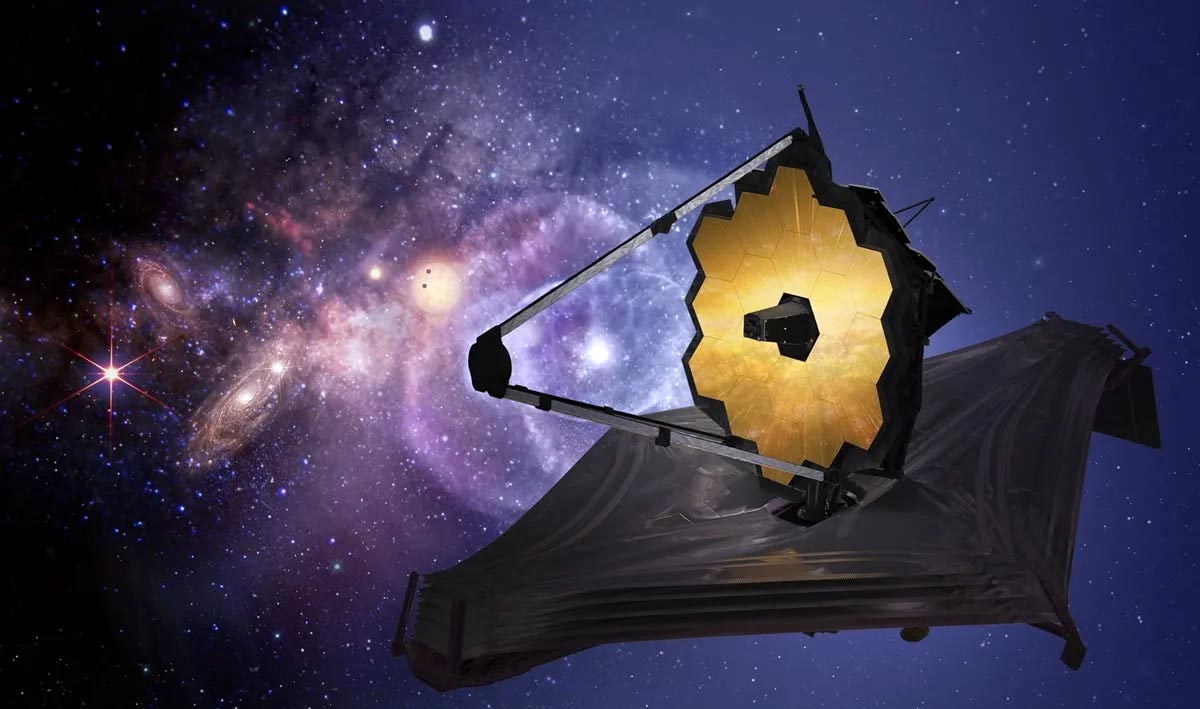Artist’s illustration of a potential Hycean world, where methyl halide gases would be detectable in the atmosphere. Credit: NASA, ESA, CSA, Joseph Olmsted/STScI

Scientists are rethinking how to detect alien life by focusing on planets vastly different from Earth.
Instead of searching for familiar biosignatures like oxygen, they’re investigating methyl halides – gases produced by microbes on Earth that could be more easily detected in the thick hydrogen atmospheres of Hycean planets. The James Webb Space Telescope (JWST) could spot these gases in just hours, making the search for extraterrestrial life more efficient than ever.
A New Path to Finding Alien Life
Scientists have discovered a new way to search for life on distant planets, focusing on worlds that are very different from Earth and on gases that have been largely overlooked in the hunt for extraterrestrial life.
In a recent Astrophysical Journal Letters study, researchers from the University of California, Riverside, highlight a group of gases that could serve as potential biosignatures. These gases, known as methyl halides, might be detectable in the atmospheres of exoplanets – planets beyond our solar system – using the James Webb Space Telescope (JWST).
Methyl halides are chemical compounds made up of a methyl group (one carbon and three hydrogen atoms) attached to a halogen atom, such as chlorine or bromine. On Earth, they are primarily produced by bacteria, marine algae, fungi, and certain plants.
Biosignatures are chemical, physical, or biological indicators that suggest the presence of life. These can include specific gases in a planet’s atmosphere, organic molecules, or patterns in light that hint at biological activity. Scientists search for biosignatures on exoplanets to determine whether life might exist beyond Earth.
Hycean Planets: A Better Target for Detection
A major challenge in detecting these gases is that Earth-like exoplanets are too small and dim for JWST to observe in detail.
Instead, JWST would have to aim for larger exoplanets orbiting small red stars, with deep global oceans and thick hydrogen atmospheres called Hycean planets. Humans could not breathe or survive on these worlds, but certain microbes might thrive in such environments.
A Unique Biosignature Advantage
“Unlike an Earth-like planet, where atmospheric noise and telescope limitations make it difficult to detect biosignatures, Hycean planets offer a much clearer signal,” said Eddie Schwieterman, UCR astrobiologist and paper co-author.
The researchers believe that looking for methyl halides on Hycean worlds is an optimal strategy for the present moment in time.
“Oxygen is currently difficult or impossible to detect on an Earth-like planet. However, methyl halides on Hycean worlds offer a unique opportunity for detection with existing technology,” said Michaela Leung, UCR planetary scientist and first author of the paper.
Webb is the premier observatory of the next decade, serving thousands of astronomers worldwide. It studies every phase in the history of our Universe. Credit: NASA

Speed and Efficiency with JWST
Additionally, finding these gases could be easier than looking for other types of biosignature gases indicative of life.
“One of the great benefits of looking for methyl halides is you could potentially find them in as few as 13 hours with James Webb. That is similar or lower, by a lot, to how much telescope time you’d need to find gases like oxygen or methane,” Leung said. “Less time with the telescope means it’s less expensive.”
Could Life Thrive in Extreme Environments?
Though life forms do produce methyl halides on Earth, the gas is found in low concentrations in our atmosphere. Because Hycean planets have such a different atmospheric makeup and are orbiting a different kind of star, the gases could accumulate in their atmospheres and be detectable from light-years away.
“These microbes, if we found them, would be anaerobic. They’d be adapted to a very different type of environment, and we can’t really conceive of what that looks like, except to say that these gases are a plausible output from their metabolism,” Schwieterman said.
Building on Past Research
The study builds on previous research investigating different biosignature gases, including dimethyl sulfide, another potential sign of life. However, methyl halides appear particularly promising because of their strong absorption features in infrared light as well as their potential for high accumulation in a hydrogen-dominated atmosphere.
While James Webb is currently the best tool for this search, future telescopes, like the proposed European LIFE mission, could make detecting these gases even easier. If LIFE launches in the 2040s as proposed, it could confirm the presence of these biosignatures in less than a day.
“If we start finding methyl halides on multiple planets, it would suggest that microbial life is common across the universe,” Leung said. “That would reshape our understanding of life’s distribution and the processes that lead to the origins of life.”
Expanding the Search for Life
Moving forward, the researchers plan to expand this work on other planetary types and other gases. For example, they’ve done measurements of gases emanating from the Salton Sea, which appears to produce halogenated gases, such as chloroform. “We want to get measurements of other things produced in extreme environments on Earth, which could be more common elsewhere,” Schwieterman said.
The Ultimate Question: Are We Alone?
Even as researchers push the boundaries of detection, they acknowledge that direct sampling of exoplanet atmospheres remains beyond current capabilities. However, advances in telescope technology and exoplanet research could one day bring us closer to answering one of humanity’s biggest questions: Are we alone?
“Humans are not going to visit an exoplanet anytime soon,” Schwieterman said. “But knowing where to look, and what to look for, could be the first step in finding life beyond Earth.”
Reference: “Examining the Potential for Methyl Halide Accumulation and Detectability in Possible Hycean-type Atmospheres” by Michaela Leung, Shang-Min Tsai, Edward W. Schwieterman, Daniel Angerhausen and Janina Hansen, 11 March 2025, The Astrophysical Journal Letters.